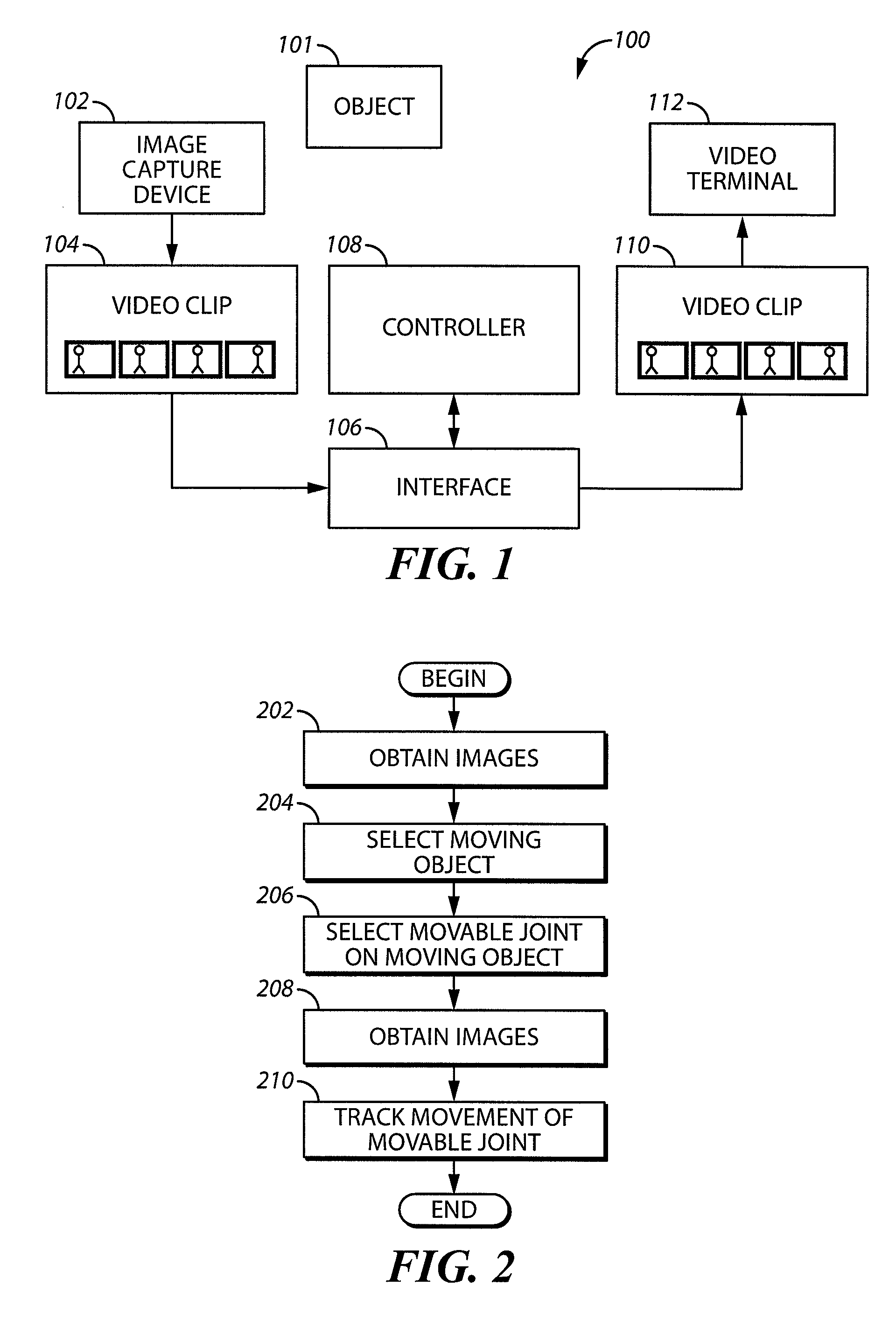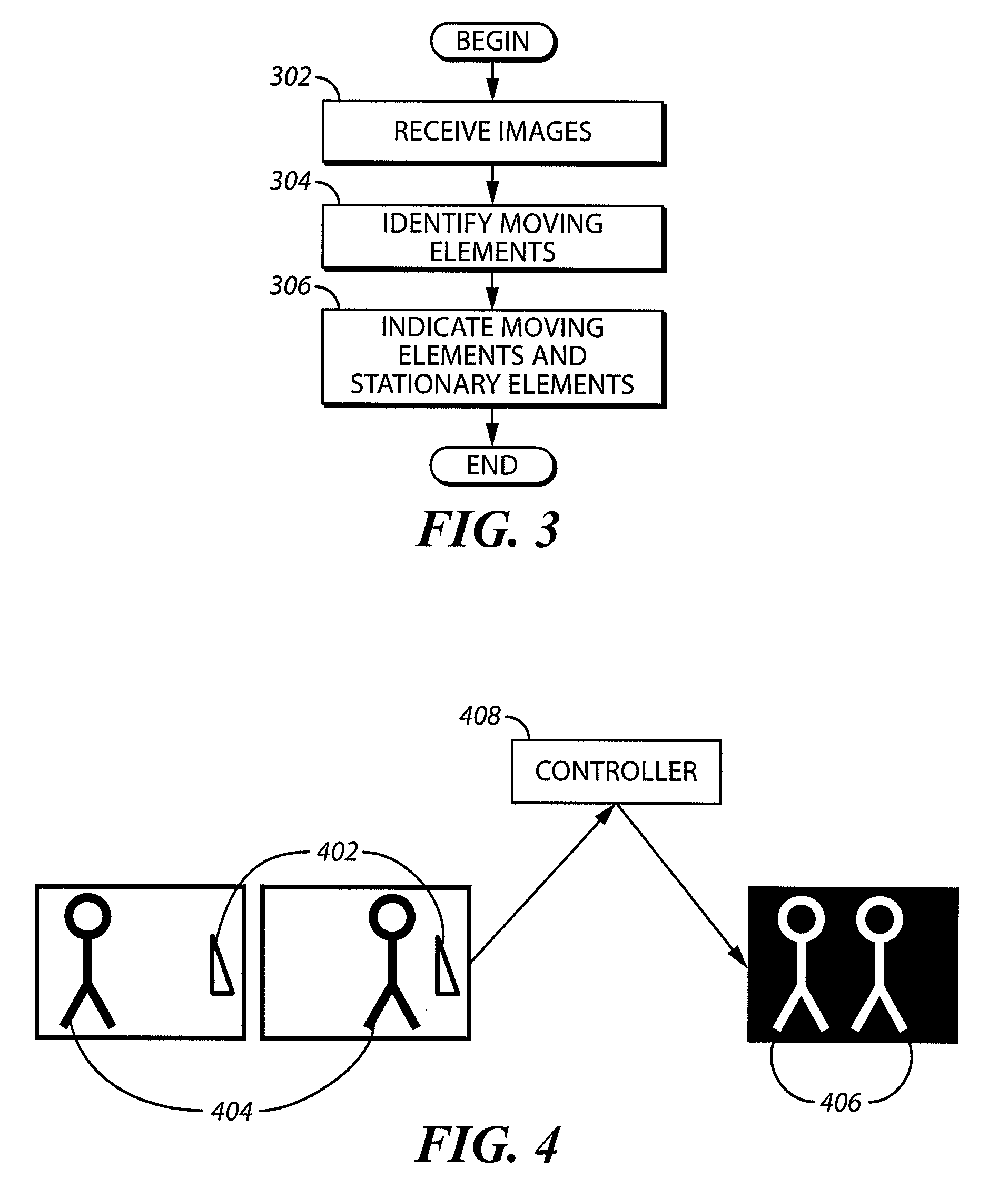System and method for tracking movement of joints
a technology of joints and joints, applied in the field of tracking the movement of objects, can solve the problems of affecting the wearability of the subject's suit, requiring the attachment of a costly and cumbersome marker to the object, and affecting the effect of movement, so as to achieve the effect of convenient and cost-effective us
- Summary
- Abstract
- Description
- Claims
- Application Information
AI Technical Summary
Benefits of technology
Problems solved by technology
Method used
Image
Examples
Embodiment Construction
[0027]Referring now to FIG. 1, a system 100 for tracking joints of an object is described. The system 100 includes an image capture device 102, which supplies a video clip (or series of image frames) 104 of an object 101 to an interface 106. The interface 106 is coupled to a controller 108. The controller creates and the interface transmits a modified video clip 110 for display to a user on a display 112.
[0028]The image capture device 102 may be any suitable device that is used to acquire images. In this respect it may be a video camera, a digital camera, or a camera on a satellite. Other types of cameras or image capture devices (e.g., using other technologies such as ultrasound, infrared) may also be used.
[0029]The interface 106 is any type of device or combination of devices that utilizes any combination of hardware and programmed software to convert signals between the different formats utilized by the image capture device 102, controller 108, and display 112. For example, the i...
PUM
 Login to View More
Login to View More Abstract
Description
Claims
Application Information
 Login to View More
Login to View More - R&D
- Intellectual Property
- Life Sciences
- Materials
- Tech Scout
- Unparalleled Data Quality
- Higher Quality Content
- 60% Fewer Hallucinations
Browse by: Latest US Patents, China's latest patents, Technical Efficacy Thesaurus, Application Domain, Technology Topic, Popular Technical Reports.
© 2025 PatSnap. All rights reserved.Legal|Privacy policy|Modern Slavery Act Transparency Statement|Sitemap|About US| Contact US: help@patsnap.com



